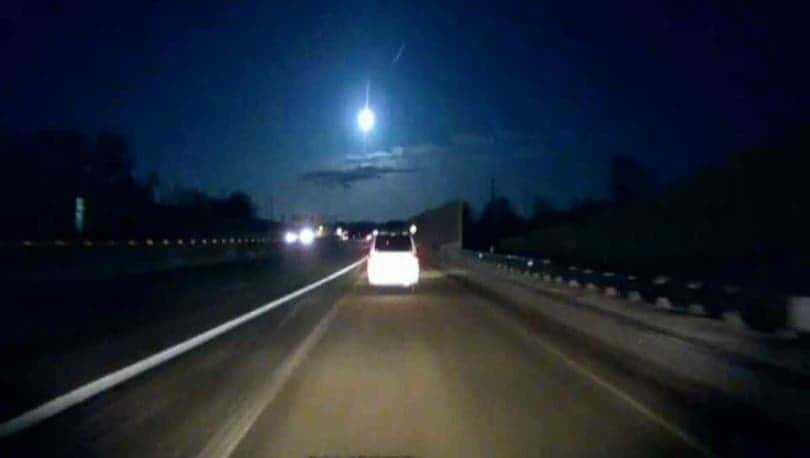If you’re out hunting pieces of the meteorite that shook Michigan on Tuesday 16, Darryl Pitt, curator of the Macovich Collection of Meteorites, has an offer you can’t refuse: be the first to bring him a 2.2 pound (1 kilogram) chunk of the space rock, and he’ll pay you $20,000.

Image via WeekFacts.
Pitt is taking inspiration from video games and sending Michiganians out on a quest for fame, glory — and fortune. Pitt, who’s also a meteorite consultant for auction house Christie’s and one of the largest private collectors of meteorites in the world, is putting up a reward of $20,000 for the first man, woman, or child who can bring him a 2.2-pound or more of the meteorite that crashed in Michigan three days ago.
He described the yet-to-be-retrieved space rock as a “winning extraterrestrial lottery ticket,” adding that the time is now for would-be treasure hunters to turn their efforts into a handsome profit.
Starter quest
“It’s better to go out there and find them sooner, because the longer they’re on the ground, the more they tend to blend in with Earth rocks,” said Pitt. “I really want this to be found and the only way that’s going to happen is if there are more boots on the ground.”
Preliminary NASA estimates place the meteorite that struck Michigan at around 6 feet in diameter (1.8 meters), and the force of its impact roughly around 10 tons of TNT. However, until we get our hands on a sample of the rock, we won’t be able to refine these estimates or determine exactly where it came from.
That’s the main reason Pitt issued his reward for the meteor. Furthermore, he’s a Michigan native who grew up in Southfield and studied at the University of Michigan and has a strong interest in space rocks. He remarked how unique it is for bystanders to witness an impact firsthand, saying that the event heightened public awareness and helped make central lower Michigan a hotbed for meteorite hunters.
He adds that it isn’t very common for him to offer a reward for meteorites, simply because there aren’t many known meteor events where the public is aware of its specific trajectory and location.
“Earth is bombarded regularly by materials, but two-thirds of those materials end up in the ocean, and a very large percentage lands in uninhabited areas and places where you can’t find it,” Pitt said.
The fate of this meteorite is still far from settled, however. William Cooke, the head of NASA’s Meteoroid Environment Office in Huntsville, Alabama, says that the meteorite was spotted after 8 p.m. on Tuesday. He estimates that the meteor fragmented about 20 miles (32 kilometers) above the surface “give or take 5 miles.” You can see it happening here:
Those are about the only clear answers we have so far. NASA couldn’t reliably track the rock after that, as the material released as it broke apart screened the rock from radar.
On Wednesday, the agency released a narrowed-down impact area to the west of Hamburg Township in Livingston County (which seems to be pretty accurate). A better-defined search area would give residents a relatively solid chance of finding meteorite material, Pitt says, although the likelihood, as usual, remains fairly small.
Aspiring questees should take heart, however, and not falter in the face of unfriendly odds. We don’t know what the Michigan meteorite is made of, Pitt explains, but it could teach us a lot about the universe.
“We know that there are many meteorites that contain amino acids or building blocks of proteins of life that have never been seen before on Earth. They’re very important, fascinating objects.”
In the end, both Pitt and Cooke would like to remind everybody they must always ask permission from the owners if their search leads them to private properties. You can contact Pitt via his email or at 917-213-8265.


